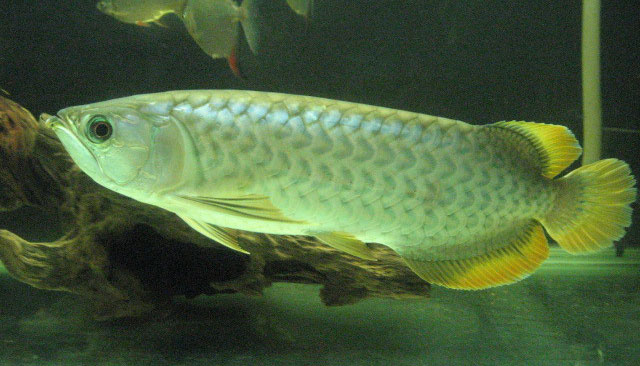Thursday, November 18, 2010
November 18, 2010 : Arowana
Arowana
Arowanas are freshwater bony fish of the family Osteoglossidae, also known as bonytongues. In this family of fishes, the head is bony and the elongate body is covered by large, heavy scales, with a mosaic pattern of canals. The dorsal and the anal fins have soft rays and are long based, while the pectoral and ventral fins are small. The name "bonytongues" is derived from a toothed bone on the floor of the mouth, the "tongue", equipped with teeth that bite against teeth on the roof of the mouth. The fish can obtain oxygen from air by sucking it into the swim bladder, which is lined with capillaries like lung tissue. The arowana is an "obligatory air breather".
Osteoglossids are carnivorous, often being specialized surface feeders. They are excellent jumpers; it has been reported that Osteoglossum species have been seen leaping more than 6 feet (almost 2 metres) from the water surface to pick off insects and birds from overhanging branches in South America, hence the nickname "water monkeys". Arowanas have been rumored to capture prey as large as low flying bats. All species are large, and the arapaima is one of the world's largest freshwater fish, at 2.5 metres (8.2 ft) in length. Arowana species typically grow to around 3 to 4 feet in captivity.
Several species of osteoglossid exhibit extensive parental care. They build nests and protect the young after they hatch. Some species are mouthbrooders, the parents holding sometimes hundreds of eggs in their mouths. The young may make several tentative trips outside the parent's mouth to investigate the surroundings before leaving permanently.These fishes are best kept with live feed and they easily outgrow the tank within a span of 8/10 months. Always preferred in a large type aquarium.
Subscribe to:
Post Comments (Atom)


No comments:
Post a Comment